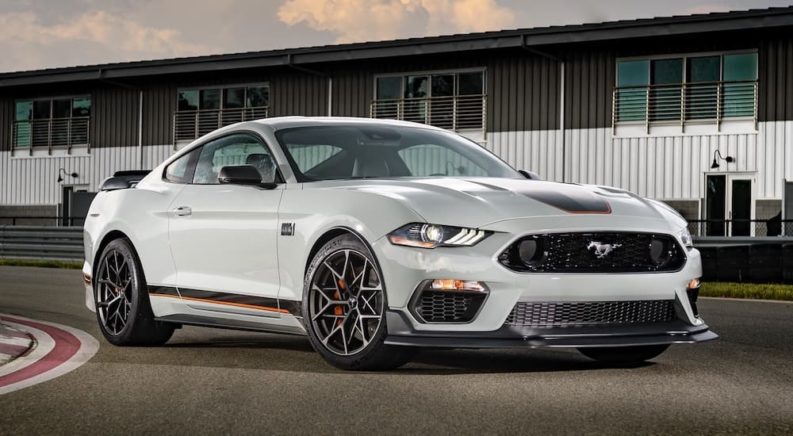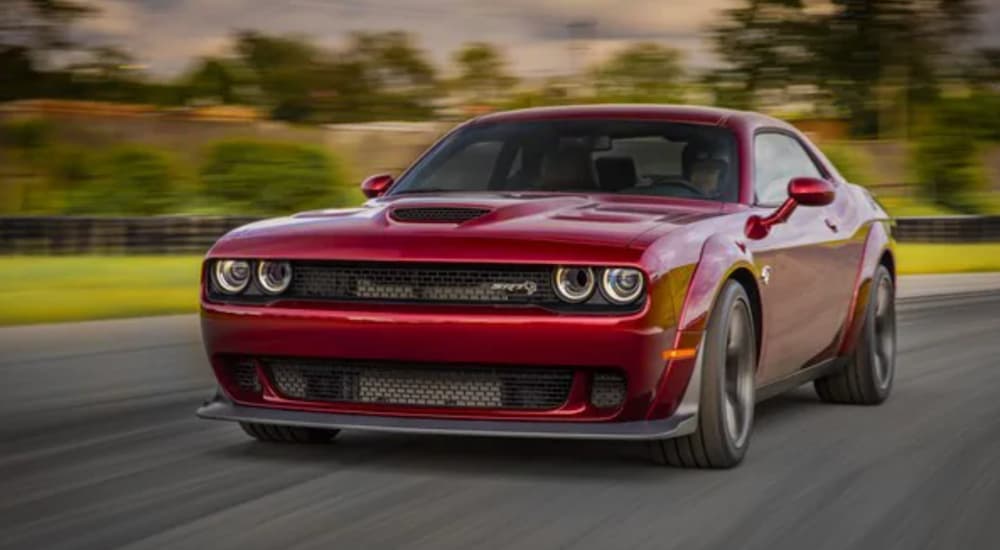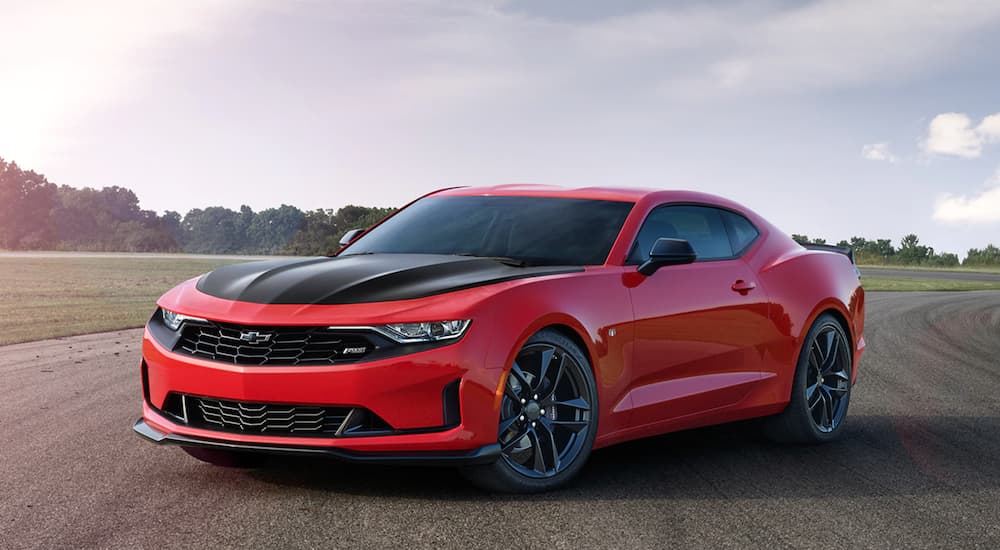High-performance cars are ranging into the outrageous when it comes to street-legal capability, particularly in the last decade. Whether you happen to be a strict lover of extreme cars like the Lambos and Ferraris only the rich and famous can afford or you like the idea of an affordable performance car like a Camaro, you have a wide range of options. You might even find a few when you type “used cars for sale near me,” though you may have to tweak that search to discover the more interesting options in your area.
Enthusiasts know there are exciting features to be found in performance vehicles now, with anything from engine upgrades to brakes taking the capability of the right car design into near supercar territory. If you happen to be in the market for a fun performance model, but you don’t want to pay the hefty price tag of a new car, you can go for a used model. Find one with a clean history devoid of any crashes, and you could find a sweet deal on a car built just for the pleasure of driving. Here, we share a few features you can find on performance cars, starting with what you might discover under the hood.
Engine Innovations
Does it all start with the engine? Some would insist that’s true, but the power of a performance car is really a sum of its total parts. With that said, the engine certainly plays one of the biggest roles in the production. Back in the 1920s, stock vehicles were getting rebuilt for performance-rated features that won races, and any one of several innovations could make a difference in a vehicle’s performance. Increasing the size of engine valve diameters, lowering the weight of a flywheel, or making the bore diameters larger could all have an effect on performance. Or, you could just put the engine in the midsection of the car’s body, like the C8 Corvette recently did.
In fact, the C8 Corvette also lays claim to being the most powerful pushrod crankshaft engine in the world, making as much as 490 hp with its 6.2-liter V8, but the real stunner is how it can redline at 6500 RPMs without missing a beat. Within the genius of the Corvette’s well-engineered powertrain is another aspect of modern engines that helps save on fuel: cylinder deactivation. Then again, if fuel conservation is a goal, we see high performance capability arising in the realm of electric motors, and one vehicle in particular that has gotten lots of notice is the BMW i8. With the hybrid powertrain in the i8, as well as with other similar powertrains, you find that lag in turbo power in high-powered gas engines disappears with the use of the electric motor to pick up the slack. You can find an electric boost in other high performers like Ferrari LaFerrari, McLaren P1, or the Porsche 918 Spyder.
The last trick we’ll list here boils down to displacement. An Alfa Romeo engine that makes a whopping 505 hp—and that redlines at 6500 RPM like the Corvette C8—is none other than the twin-turbo 2.9-liter V6. This engine is a superstar of displacement, with 2891 cubic centimeters of volume as its only flow; it still achieves impressive torque of 443 lb-ft along with its high power output of 505 hp. Such a phenomenon is becoming more and more common now that demand for better fuel economy is pushing engineers to tune engines with better bore and stroke.
Steering
Rather than discuss the mechanics of rack and pinion steering, a far more exciting innovation is cropping up in vehicles: four-wheel steering. What’s great about this feature is the way it behaves depending on the speed of the car. At speeds below 30 mph, the steering allows the wheels to turn in opposite directions, which creates a smaller turning radius. Aside from just easier parking duty, this can also let you navigate tighter turns like when you need to pull a U-turn on a two-lane road. Once you get rolling on the highway above 50 mph, the steering shifts to move the wheels in a uniform direction. This accomplishes more stability and better responsiveness, particularly on curves. If you want to discover vehicles with this feature—which isn’t new, it’s just being brought back again—look for the Porsche 911 Turbo with rear-wheel steering. It also happens to be in the Acura RLX and the new electric Chevy Silverado 1500.
Air Quality
Just for the fun of it, instead of rambling on about the shapely nature of so many fine automobiles, it seemed more fitting to capture a few of the more interesting features that lean into a vehicle’s capability to conquer the air. Two vehicles come to mind: the 2015 Jaguar F-Type Coupe and the 2015 Dodge Challenger SRT Hellcat. In the case of the Jag, a Bond-style spoiler lifts automatically from beneath a trap door when you hit 70 mph. Though it doesn’t release any smoke or spray oil on your enemies, it certainly is cool, and it keeps your tail from fishing. With the Challenger, Dodge masters air intake with a sneaky little opening that masquerades as a headlight, hiding in plain sight on the front grille next to the actual headlight. With the extra airflow, this engine is one of the most powerful ever built, achieving up to 600 hp.
Suspension and Handling Upgrades
When you buy a car for its performance value, it’s expected that you will have a stiff ride quality from that tuned suspension. Though it has been an aspect of curve-loving vehicles for decades, a stiff suspension doesn’t have to be the way to go anymore. Thanks to the wonderful world of magnets, the suspension can remain agile and communicate the feel of the pavement while also cushioning the ride. Magnetic ride control utilizes magnetic particles suspended in fluid to send instant messages to the onboard system that “reads” the flow of the particles during your drive. The suspension stiffens automatically within microseconds, so quickly your brain won’t even register the difference, and road chatter is absorbed without any loss of stability.
A number of GM vehicles utilize this technology, like Cadillac, Corvette, and Camaro, but Ford uses this tech in the Mustang Shelby GT350, Audi puts it into its TT and S3 models, and Ferrari injects it into the California and 599 models, among too many others to list. Another suspension-related dynamic comes in the form of engine mounts. With engine mounts in place, they keep the engine steady during those curvy sections of roadway, then release when you go back to less strenuous maneuvers. The effect is similar to magnetic ride control and is a favorite of the Porsche 911 GT2 and GT3 models.
High-Powered Brakes
Though you might argue that brakes are less a part of performance and more about putting an end to it, if you want to own a fast car, you better have great brakes. A number of types of brakes out there may boast about their capability, particularly the recent rise in carbon-ceramic brake rotors, but it might be wiser to keep it simple. For instance, manufacturers are moving toward using more aluminum brake calipers, but while they may reduce weight, they also melt at a lower temperature than steel or more traditional cast iron. Instead, a better middle ground can be found with the slotted or cross-drilled cast iron brakes like those made by Brembo.
By drilling holes or cutting slots out of the rotors, this reduces the weight of the component. These holes then serve as a vent for heat that results from the friction applied during hard braking, something you really need when your engine can reach zero to 60 in under three or four seconds. Vehicles typically found equipped with Brembo brakes include the Corvette, Camaro, Mustang, Dodge Viper SRT, and the Lamborghini Aventador. Though a lot of racing cars rely heavily on carbon-ceramic brakes, be wary of having them installed unless you can foot the high bill for replacing them, a price that can skyrocket over $10K.
Unique Is Memorable
High-performance cars often employ innovative strategies to get their speed and agility into higher realms, but sometimes they sound almost like science fiction. Take the aerogel Chevy put into the center tunnel to keep things cool, not unlike the gel in your fancy memory foam mattress. Dodge gives buyers of its Hellcat vehicles two sets of keys; the red set will let you use its outermost range of horsepower. Then again, you could just be ludicrous if you get yourself a Tesla Model S P90D, which actually has a ludicrous mode that lets you go from zero to 60 in 2.8 seconds. Performance cars promise to keep getting more thrilling, especially with electric vehicles coming on strong. Watch all the manufacturers mentioned here for future innovations, especially the promises from future Corvettes.






